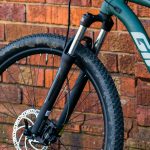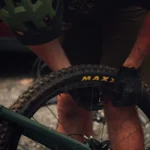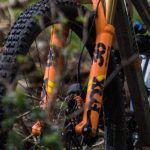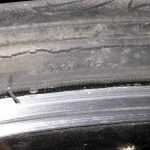Mountain bike wheel diameters influence riding position, bike handling traits, and what terrain each best suits. Assess your height, riding style, and typical trails for deciding if 26”, 27.5” or 29” wheels deliver the optimum blend of control and capability advancing your off-road skills.
History of MTB Wheel Sizes
The 26” wheel standard ruled mountain biking for decades until larger options emerged. Early fat tire bikes borrowed existing cruiser widths to roll over bumpy dirt. And scaled down 26” BMX wheels delivered durable components benefiting explosive leaping. So 26” became synonymous with capable off-road bikes for years.
As suspension technology improved smoothing trails, experimenting with larger diameter 29” wheels gained traction by 2006. They rolled faster sustaining momentum better to battle inefficient smaller wheels constantly slowing between obstacles. 29ers climbed efficiently too while increased angle of attack meant confident descending.
But excessive wagon wheel dimensions also decreased strength and maneuverability for many average height riders. This led realizing the middle ground Goldilocks size of 27.5” by 2013. They blended efficient rollover with sufficient strength and nimble handling at moderate widths suiting wider ranges of riders and conditions.
Wheel Size Pros and Cons
The debate over optimum mountain bike wheel size rages on because all diameters have benefits depending on rider measurements and skill levels influencing handling traits. Compare pros and cons below when deciding the best fit.
26” Wheels
Pros: Lightweight with ample strength, accelerate faster, nimble slow speed control
Cons: Momentum lost between obstacles, inferior rollover ability, outdated components
27.5” Wheels
Pros: Balance nimble handling with improved rollover, increased control for average riders
Cons: Jack-of-all-trades master of none, steep learning curve, some pedal strikes
29” Wheels
Pros: Superior rollover and momentum keepspeed, increased traction, optimized climbing traction
Cons: Heavier, cumbersome slow handling, toe overlap, strength limits for hard charging
Ideal Wheel Fit Based on Rider Height
While aspects like regional terrain and individual riding preferences influence ideal wheel sizing, rider height serves as the primary gauge for choosing the best handling fit. Standover clearance, reach measurements to handlebars, and toe overlap diminish maneuvering issues that could discourage beginners if ill-fitted. Consult sizing charts when assessing optimum wheel diameter.
Best for Sub 5’4″ Riders: 26″ Wheels
Best for 5’4″ to 5’10” Riders: 27.5″ Wheels
Best for Over 5’10” Riders: 29″ Wheels
Of course rider skills, fitness and chosen terrain further influence ideal diameter suitability beyond height alone. But use stauncher height recommendations as the starting gauge.
26” Wheel Traits
Now only found on entry level low budget bikes and some dirt jump/slalom models, 26” wheels deliver snappy acceleration and nimble slow handling benefiting newer riders and smaller folks. Short chainstays easily loft front wheels surmounting technical ledges with fast directional changes attacking tight singletrack.
But tiny wheels require more pedal strokes maintaining speed between obstacles tiring legs faster. And minimal tire patch with steep sidewalls limit grip and suspension effectiveness on rooty terrain. Constant pumping to sustain momentum makes 26ers inefficient long haul options now that larger, stronger diameters exist.
If debating between 29 and 26 inch wheels but fear cumbersome handling, consider whether boosting skills first on nimble 26 works better over directly struggling with 29er quirks. You may progress faster honing techniques on reactive 26s before benefiting from big wheels later.
27.5” Sweet Spot Design
Best balancing traction, acceleration, and obstacle rollover in a strong package, 27.5” models dominate modern mountain bike sales after ending the 26 vs 29 war. They blend sufficient lightweight maneuverability for playful jumps and switchbacks with improved stability and traction benefiting all-around trail riding to moderate downhill.
Scaling 29er technology to mid-size diameters better suits average height enthusiasts. Marginally slower steering response than twitchy 26ers makes them easier to control for novices getting comfortable off-road. And moderate weight and rotational mass means you don’t constantly sprint to maintain momentum through chunky sections.
For riders torn between sinewy 26 agility with 29 stability and speed, test ride mid-measure 27.5 wheels. Their balanced traits likely win you over inspiring confident exploring.
29” Wheels Roll Over Anything
Originally marketed for cross country racing efficiency, 29ers build momentum conquering undulating terrain slower 26s bog down between. Larger diameter and width increase contact patch sticking better through loose and off-camber sections. And increased angle of attack translates traction up front when climbing while their monster truck height smooths over obstacles keeping speed steady.
But heavyweight wheels limit liveliness for playful jumps and tricks. Sluggish handling requires muscling 29ers around tight singletrack too compared to the darty 26ers longtime devotees still favor. Riders focusing purely on covering max distance fast embrace the wagons while others find them cumbersome.
Go bigger with 29s if craving XC efficiency and don’t mind the heft compromising snappy tricks. Pair them with short stems and wide bars improving slow handling for singletrack instead of just fireroads.
Customize Components Matching Wheel Size
Fine tune ride traits further by tailoring components catering to strengths of each wheel diameter. Follow frame size guidelines with recommended stems, seatposts, crank arm lengths and gearing ranges maximizing intended wheel dimensions for terrain you tackle.
For example, boost 26er liveliness with stiff lightweight wheels and short handlebars easily lofting front ends. Build 29ers with wider rims and tires increasing floatation through loose terrain their momentum smooths over. And ensure mid-fat 27.5+ bike tires have sufficient squish for their intended downhilling and bike park stability.
Don’t just stick with stock component specs if sizing doesn’t optimize your new wheels’ capabilities after initial rides. Swap parts like bars and rubber matching the ride personality you expect from that wheel size.
Tire Construction Quality Differs Too
Beyond diameters, actual tire construction technology differs greatly impacting overall wheel performance. Basic wire beads and minimal tread dimensions on entry level tires undermine even premium wheelsets’ capabilities. So upgrade rubber suits the wheels’ strengths after budget bikes’ OEM tires wear out.
High strength folding casings with reinforced sidewalls and multi-compound tread rubber better compliments lightweight aftermarket rims elevating speeds and grip. And increased tread siping and knob shaping boosts braking and cornering traction optimized for each bikes chassis dynamics. Don’t overlook tire compound and construction matching intended wheel diameter advantages.
Finally, boost mid-fat dimensions like 2.8” width on 27.5” wheels striking an ideal balance between heft and grip. While 3.0” tires slow acceleration, their monster grip tames the increased diameter wheels’ tendency to deflect off obstacles and primer line choices. Analyze your priorities between agility, cushion and carrying momentum over trail features. Then select tire construction and rubber compounds playing to your newest wheelset’s strengths once you settle on ideal diameter categorization.
While fork travel, bike geometry, transmission range and saddle personalization impact riding experiences too, wheel diameter serves as the core building block determining intended handling personality. So research sizes catering closest to your height, skill level and local terrain before tailoring components maximizing that contact patch for smiles every mile. Test rides validate assessments further cementing ideal diameter decisions optimizing adventures ahead.






